Publications
Monographs
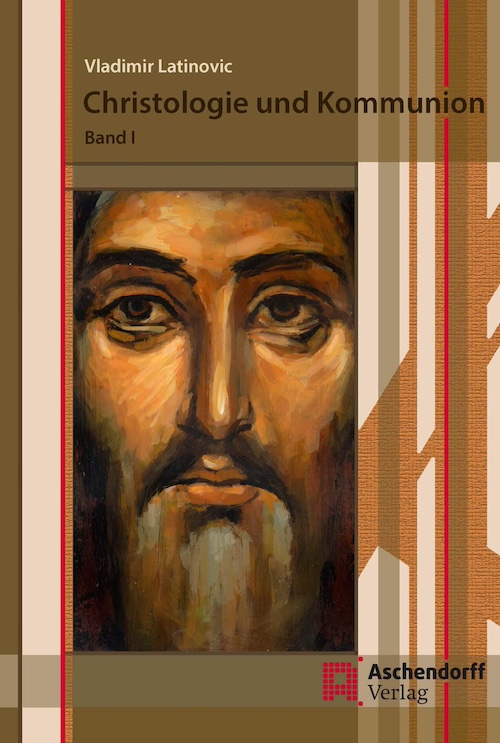
Vladimir Latinovic, Christologie und Kommunion: Vol. 1: Entstehung und Verbreitung der homoousianischen Christologie (Münster: Aschendorff-Verlag, 2018), 256 pp.
The main thesis of this study is that the introduction and reception of homoousian Christology had a rather negative impact on certain devotional practices, including but not limited to the frequency of receiving the Eucharist itself. This first volume examines the doctrinal changes of the time, particularly in relation to to the Christology which, in the course of the various christological controversies, developed from subordinatism to homoousianism through the successive emphasis on the deity of Christ. The four phases of this doctrinal development are each illuminated by means of two to three representatives involved in each particular debate (Alexander, Athanasius and Arius; Apollinaris and Diodorus; Nestorius and Cyril; Eutyches, Dioscurus and Theodoret). Not only is it shown how these theologians participated in the concrete discussion and which Christology they represented, but also what direct consequences this had for their own understanding of the Eucharist.
Reviews:
– Peter C. Phan, Theological Studies 80.2 (London: Sage, 2019), 472-474. READ
– Notker Baumann, Zeitschrift für Kirchengeschichte 131.2 (Stuttgart: Kohlhammer, 2020), 262-263. READ
– Jörg Neijenhuis, Jahrbuch für Liturgik und Hymnologie 60 (Göttingen: Vandenhoeck & Ruprecht, 2021), 171-172. READ
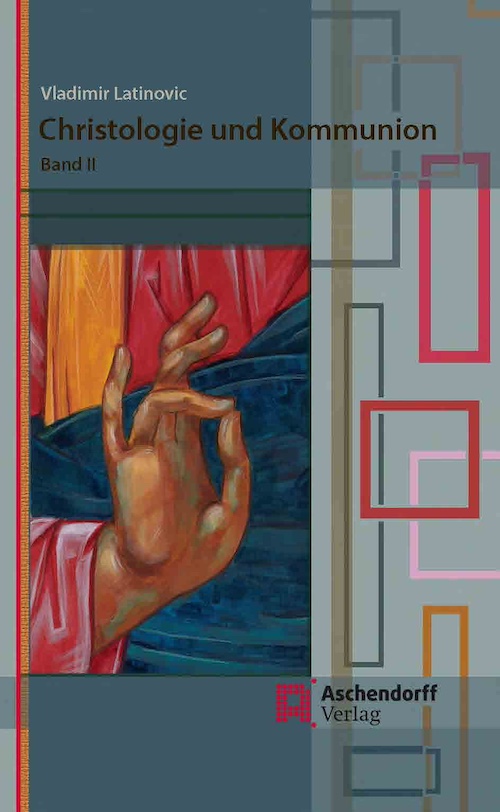
Vladimir Latinovic, Christologie und Kommunion, Vol. 2: Liturgische Einführung und Rezeption der homoousianischen Christologie (Münster: Aschendorff-Verlag, 2020) 333 pp.
This second volume of the study examines the reasons for the passionate and numerous involvement of lay people in christological debates of late antiquity. The main thesis is that the changes in Christology analysed in the first volume spread among the laity through liturgies, liturgical formulas, prayers, hymns and sermons. In order to verify this thesis, these forms are examined with the use of a geographical-comparative method. Lines of development within different liturgical families were examined as well as developments within individual countries or ecclesiastical provinces. This consideration is based on the assumption that there were both regional and temporal differences in the introduction of the address to Christ, which has also been confirmed in this volume. This approach has made it possible to see both the specific contextuality and the commonalities in the process of introducing homoousian Christology into and through the liturgy.
Reviews:
– Peter C. Phan, Theological Studies 82.4 (London: Sage, 2021), 698-700. READ
– Notker Baumann, Zeitschrift für Kirchengeschichte 133.2 (Stuttgart: Kohlhammer, 2022), 254-255. READ
– Jörg Neijenhuis, Jahrbuch für Liturgik und Hymnologie 60 (Göttingen: Vandenhoeck & Ruprecht, 2021) 172-173 READ
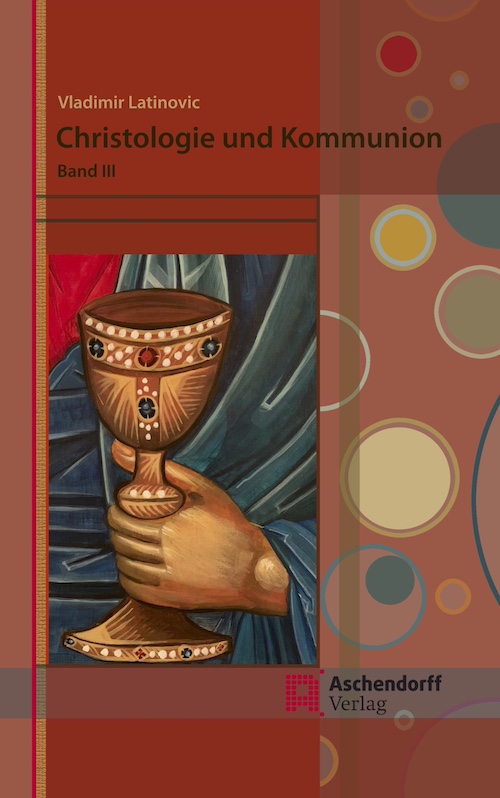
Vladimir Latinovic, Christologie und Kommunion, Vol. 3: Auswirkungen auf die Frömmigkeit und den Eucharistieempfang (Münster: Aschendorff-Verlag, 2022) 379 pp.
In this third and final volume of this study, an analysis of late antique eucharistic piety was undertaken. The research question or task was to find out how the highly complicated developments of homoousian Christology, which were the subject of the first volume, that had spread through the liturgy among the laity, which was dealt with in the second volume, affected Eucharistic devotion and in particular reception of communion. According to the thesis of this volume, the strong emphasis on the divinity of Christ has led to the decline of mediative theology in general and to the redundancy of the concept of Christ as high-priest in particular, which has ultimately brought about a development of eucharistic piety in the direction of reverence, veneration, abuse (as a healing and magical agent) of the Eucharist, and finally caused reduction in the frequency of communion reception.
Reviews:
– Peter C. Phan, Theological Studies 84.2 (London: Sage, 2023), 361-362. READ
– Jörg Neijenhuis, Jahrbuch für Liturgik und Hymnologie 62 (Göttingen: Vandenhoeck & Ruprecht, 2023) 96-97. READ
Edited Books
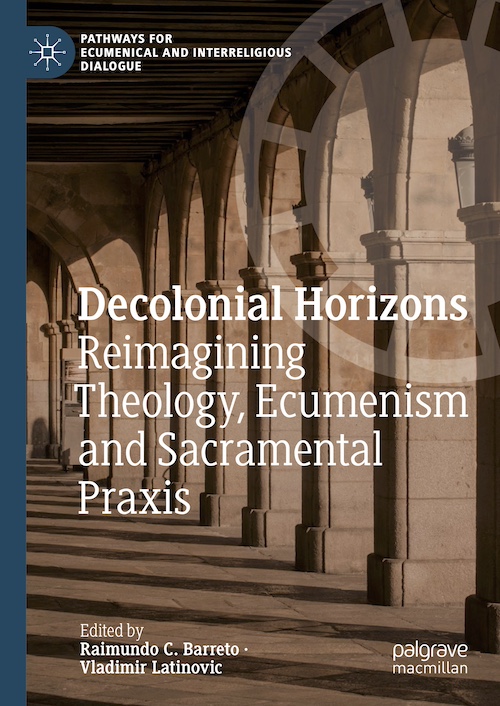
Raimundo C. Barreto, Vladimir Latinovic (eds.), Decolonial Horizons: Reimagining Theology, Ecumenism and Sacramental Praxis (Cham: Palgrave Macmillan, 2023), 282 pp.
This is the first of two volumes of essays from the Ecclesiological Investigations International Research Network’s 14th International Conference focused on decolonizing churches and theology, addressing oppressions based on gender, racial, and ethnic identities; economic inequality; social vulnerabilities; climate change and global challenges such as pandemics, neoliberalism, and the role of information technology in modern society, all connected with the topic of decolonization. The essays in this volume focus on decoloniality in religious and theological dialogue, migration, history, and education, written from historical, dogmatic, social scientific, and liturgical perspectives.
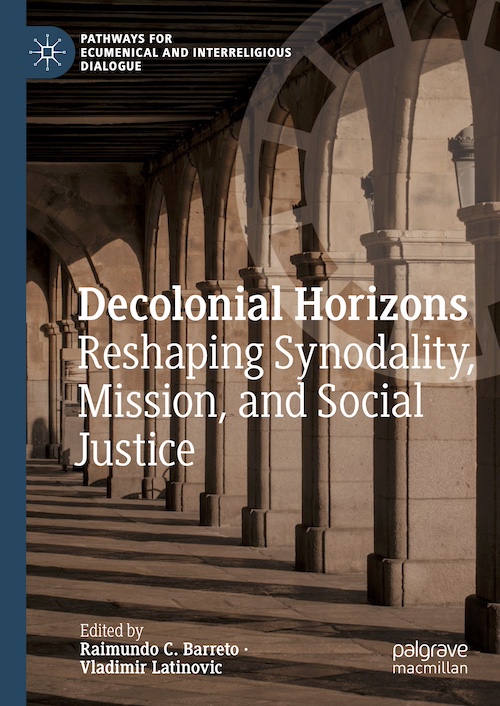
Raimundo C. Barreto, Vladimir Latinovic (eds.), Decolonial Horizons: Reshaping Synodality, Mission and Social Justice (New York: Palgrave Macmillan, 2023), 304 pp.
This is the second of two volumes of essays from the Ecclesiological Investigations International Research Network’s 14th International Conference focused on decolonizing churches and theology, addressing oppressions based on gender, racial, and ethnic identities; economic inequality; social vulnerabilities; climate change and global challenges such as pandemics, neoliberalism, and the role of information technology in modern society, all connected with the topic of decolonization. The essays in this volume focus on decoloniality in empire, family, and mission, written from historical, dogmatic, social scientific, and liturgical perspectives.
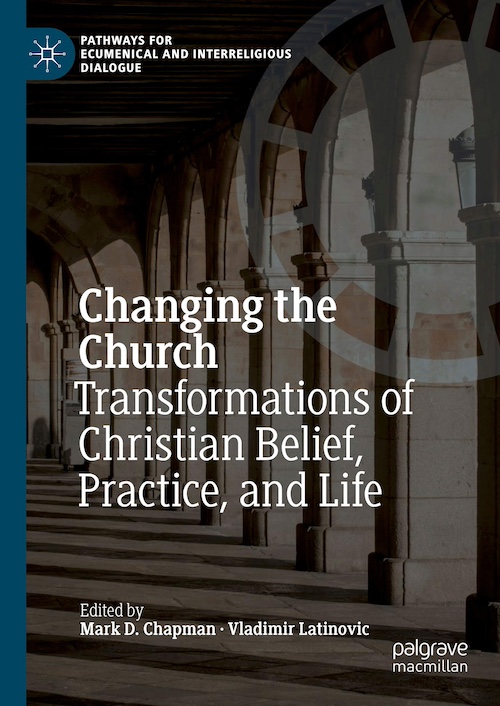
Mark Chapman, Vladimir Latinovic (eds.), Changing the Church: Transformations of Christian Belief, Practice, and Life (New York: Palgrave Macmillan, 2021), 399 pp.
This volume explores the topic of changing the church from a range of different theological perspectives. The first part explores historical topics related to change. The authors explore questions such as how the early church responded to situations such as the decline of large numbers of Christians and consider what these examples of past change might teach us today. The second part deals with change in the Church in relation to the wider social context particularly with regard to gender and social and economic issues, including drastic climate change, biodiversity loss and scarcity of natural resources. The third part addresses issues of mission and world Christianity. The fourth part deals with ecumenical and interreligious dialogue and the fifth with questions of ecclesiology. The sixth and final part discusses the issues of synodality and participation through the question of how the Church can cope with the loss of credibility while at the same time helping people rebuild trust in the Church.
Reviews:
– Richard Gaillardetz, Ecclesiology 17.2 (Leiden: Brill, 2021), 306–309. READ
– Aaron Holander, Ecumenical Trends 50.3 (New York: Graymoor Ecumenical & Interreligious Institute, May/June 2021), 27-29. READ
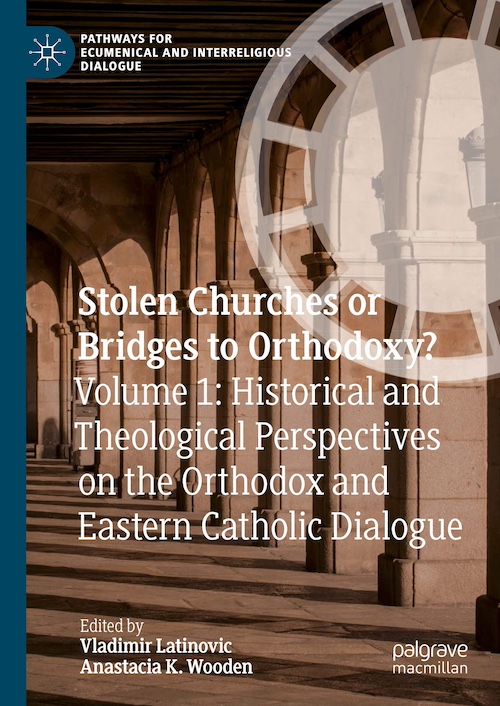
Vladimir Latinovic, Anastacia Wooden (eds.), Stolen Churches or Bridges to Orthodoxy? Vol. 1: Historical and Theological Perspectives on the Orthodox and Eastern-Catholic Dialogue (New York: Palgrave Macmillan, 2021), 409 pp.
Throughout their shared history, Orthodox and Eastern Catholic Churches have lived through a very complex and sometimes tense relationship – not only theologically, but also politically. In most cases such relationships remain to this day; indeed, in some cases the tension has increased (e.g., in Ukraine). The main contention in this relationship remains the interpretation of the historical events surrounding the birth of the Eastern Catholic Churches and the subsequent understanding of their ecclesial status. This volume explores historical and theological themes with the goal of healing memories and inspiring a direct dialogue between Orthodox and Eastern Catholic Churches. The volume brings together representatives of these Churches, as well as theologians from different geographical contexts where tensions are the greatest. The published essays represent willingness to engage in dialogue, general openness to new ideas, and opportunities to address difficult questions and heal inherited wounds.
Reviews:
– Alexandru-Marius Crişan, Review of Ecumenical Studies 13.2 (Sibiu, Romania: Lucian Blaga University, 2021), 340-345. READ
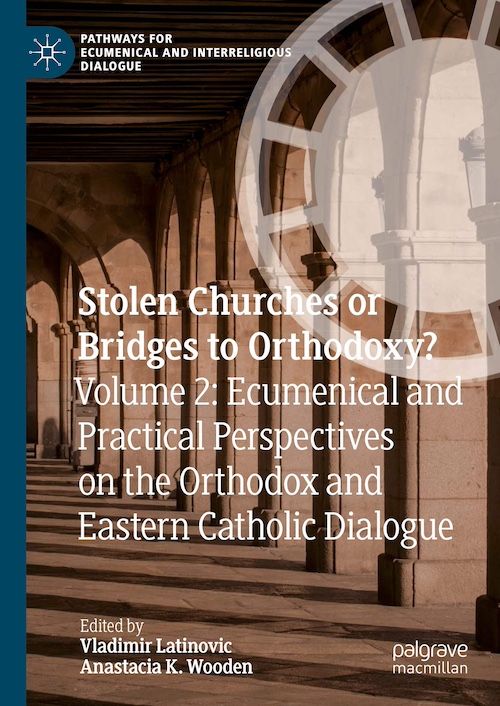
Vladimir Latinovic, Anastacia Wooden (eds.), Stolen Churches or Bridges to Orthodoxy? Vol. 2: Ecumenical and Practical Perspectives on the Orthodox and Eastern-Catholic Dialogue (New York: Palgrave Macmillan, 2021), 319 pp.
This book, the second in a two-volume set of the essays dedicated to the Orthodox and Eastern Catholic dialogue, explores ecumenical and practical themes that could serve as impulses for the furtherance of the dialogue between these Churches. The first part discusses suggestions of how ecumenical dialogue between these Churches could move forward. Among other it addresses the questions of preserving the Eastern identity by these churches, sheds light on the dynamics of ecumenical discourses, particularly in relation to the contemporary conflicts, reframes the possible role of the Eastern Catholic churches as “bridges” with a particular emphasis on their identity. The second part is dedicated to practical and canonical issues such as potential of seeing the canon law of the Eastern Catholic Churches as an instrument in ecumenical dialogue, synodality, which is firmly established in these churches as well as new geo-ecclesiological circumstances that go beyond any political ideology.
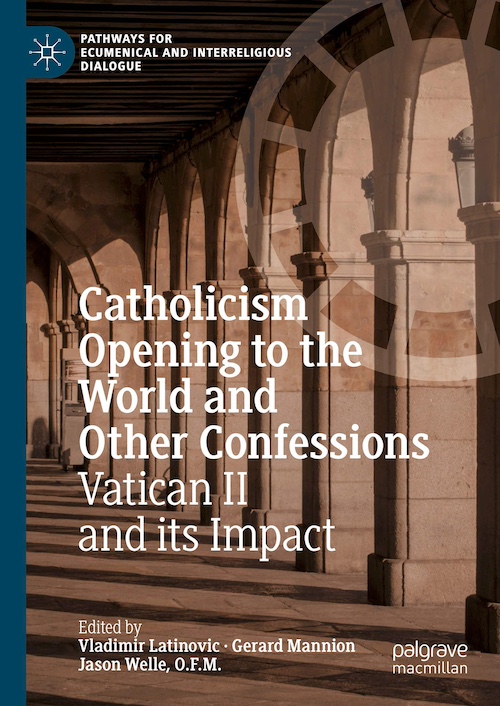
Vladimir Latinovic, Gerard Mannion, Jason Welle (eds.), Catholicism Opening to the World and Other Confessions: Vatican II and its Impact (New York: Palgrave Macmillan, 2018), 392 pp.
This volume explores how Catholicism began and continues to open its doors to the wider world and to other confessions in embracing ecumenism, thanks to the vision and legacy of the Second Vatican Council. It explores such themes as the twentieth century context preceding the council; parallels between Vatican II and previous councils; its distinctively pastoral character; the legacy of the council in relation to issues such as church-world dynamics, as well as to ethics, social justice, economic activity. Several chapters discuss the role of women in the church before, during, and since the council. Others discern inculturation in relation to Vatican II. The book also contains a wide and original range of ecumenical considerations of the council, including by and in relation to Free Church, Reformed, Orthodox, and Anglican perspectives. Finally, it considers the Council’s ongoing promise and remaining challenges with regard to ecumenical issues.
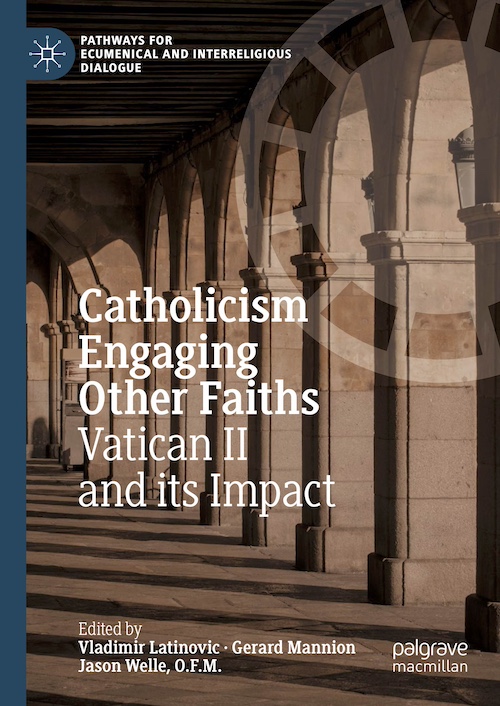
Vladimir Latinovic, Gerard Mannion, Jason Welle (eds.), Catholicism Engaging Other Faiths: Vatican II and its Impact (New York: Palgrave Macmillan, 2018), 359 pp.
This book examines how Vatican II opened the Catholic Church to encounter, dialogue and debate with other world religions. It explores the impact, relevance and promise of the Nostra Aetate declaration and how Vatican II has affected interreligious dialogue. Included in the book are several comparative studies of world religions in the post-conciliar decades, as well as studies of the contributions of certain past and present thinkers to the formation of contemporary interreligious and comparative theological methods. The volume also includes a series of perspectives on the fruits and future of Vatican II’s opening to specific faiths such as Judaism, Islam, Hinduism and Buddhism.
Reviews:
– Nadia Barsoum, Journal of South Asian and Middle Eastern Studies 42.4 (Villanova, PA: Villanova University, 2019), 90. READ
– Andrew J. Boyd, Reading Religion. FORTHCOMING
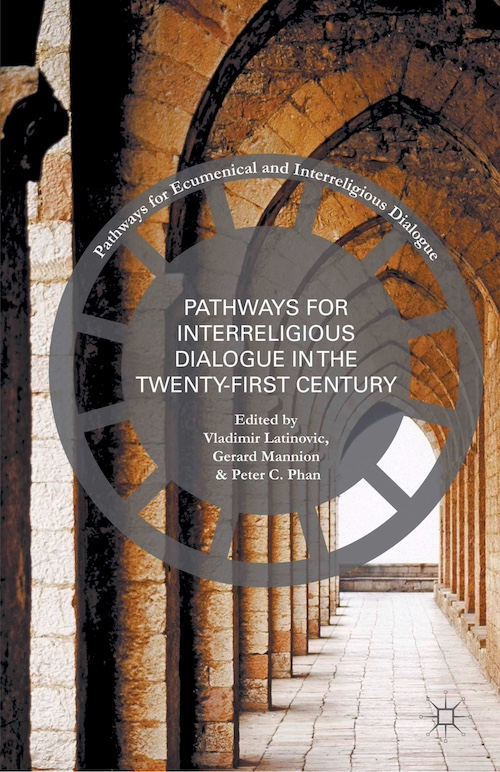
Vladimir Latinovic, Gerard Mannion, Peter Phan (eds.), Pathways for Interreligious Dialogue in the Twenty-First Century (New York: Palgrave Macmillan, 2015), 280 pp.
The alarming growth in religious conflicts across our contemporary world is all too sadly well known. Acknowledging the decline in positive relations within and between many religious communities, in this volume we tried not to forget the enormous achievements that have been made in terms of interreligious dialogue as well. Without question, inter-religious relations are crucial in the contemporary age. While most dialogue works on past and contemporary matters, this volume takes on the relations among the Abrahamic religions and looks forward, toward the possibility of real and lasting dialogue. The book centers upon inter-faith issues. It identifies problems that stand in the way of fostering healthy dialogues both within particular religious traditions and between faiths. The volume’s contributors strive for a realisation of already existing common ground between religions. They engagingly explore how inter-religious dialogue can be reenergised for a new century.
Book-Chapters
Vladimir Latinovic, ‘Who Do You Call a Heretic? Fluid Notions of Orthodoxy and Heresy in Late Antiquity’, in: Mark D. Chapman and Vladimir Latinovic (eds.), Changing the Church: Transformations of Christian Belief, Practice, and Life (New York: Palgrave Macmillan, 2021), 21-28.
This chapter seeks to show how changeable the notions of heresy and orthodoxy really are by analysing the reputation of several theologians who were originally considered to be pillars of orthodoxy only to be condemned as heretics in the later phases of their life or after their deaths. The purpose of this analysis is to show how development of doctrine affected those who refused or were not anymore able to change their teachings. These insights could contribute to the reform of current Orthodox concepts of orthodoxy, heresy and sanctity, a process through which some other churches have already passed, and thus make it more receptive for certain changes that are long overdue but also provide new ecumenical openness and understanding for the other Christian churches.
Vladimir Latinovic, ‘A First Step Toward the Dialogue Between Orthodox and Eastern Catholic Churches’, in: Vladimir Latinovic, Anastacia Wooden (eds.), Stolen Churches or Bridges to Orthodoxy? Vol. 1: Historical and Theological Perspectives on the Orthodox and Eastern-Catholic Dialogue (New York: Palgrave Macmillan, 2021), 1-16.
This chapter provides an overview of the events leading to the conference “Stolen Churches or Bridges to Orthodoxy: Impulses for the Dialogue Between Orthodox and Eastern Catholic Churches” (Stuttgart, 2019). The main goal is to document the events surrounding this conference and to explain the intent behind this conference, which is also the intent of the two volumes that have resulted from it: to provide impulses that could lead to the initiation of bilateral dialogue between Orthodox and Eastern Catholic Churches.
Vladimir Latinovic, ‘Christ as Imago Dei – A Missed Opportunity of Ante-Nicene Christian Theology’, in: John Loughlin (eds.), Human Dignity in the Judaeo-Christian Tradition: Catholic, Orthodox, Anglican and Protestant Perspectives (London: Bloomsbury Publishing, 2019) 114-128.
In this chapter I explore the concept of “Imago Dei” from christological perspective. I challenge the Nicene Christological position which placed this concept in the context of the Trinity by returning to the was in which Ante-Nicene authors such as Justin Martyr, Theophilos of Antioch, Irenaeus of Lyon, Clement of Alexandria, Tertullian and Origen used it drawing on neo-platonic philosophical ideas such as “mimesis”. My claim is that this theology offered healthier spirituality and could help inter-religious dialogue with other Abrahamic faiths and especially with Islam.
Vladimir Latinovic, ‘Reformation and the World Today: Contemporary Challenges’, in: Dale Irvin (ed.), The Protestant Reformation in World Christianity: Global Perspectives (Grand Rapids: Eerdmans Press, 2017), 154-180.
In this chapter, written for the 500th anniversary of the Reformation, it is argued that the heritage of the Reformation applies to all Christian communities and that all churches in the world can recognise this heritage as their own. The article provides an overview of the challenges facing contemporary societies in the European countries where the Reformation spread, beginning in the 16th century. The most important challenges for churches in Europe and the world include globalisation, migration and the multi-religious reality, the new atheism and the growing number of free churches in Europe. The article tries to find a constructive way to deal with these problems.
Vladimir Latinovic, ‘Confessional Belonging and National Identity: A Case Study of Serbia, Croatia, and Germany‘, in: Leo D. Lefebure (eds.), Religion, Authority, and the State: From Constantine to the Contemporary World (New York: Palgrave Macmillan, 2016), 159-177.
It is difficult to comprehend that at the dawn of the twenty-first century wars are still being fought over religious, or confessional, identity and yet, despite economical, technological, and cultural progress, as well as the advancements achieved through ecumenical and interreligious dialogue, the trouble generated by religious conflicts has actually increased and is still a significant concern. In this chapter, I examine the relationship between the confessional and national identity by analysing the conditions surrounding one particular conflict: the war fought in Croatia from 1991 until 1995. The aim is to present a theological perspective on elements of this particular war.
Vladimir Latinovic, ‘Konservativer als zuvor? – Beteiligung der Orthodoxen am ökumenischen Dialog’, in: Hans Küng et. al. (eds.), Damit sie alle eins seien: Programmatik und Zukunft der Ökumene (Ostfildern: Grünewald, 2015), 111-133.
In this chapter it is discussed if the the state of Orthodox participation in ecumenical dialogue really as bleak as it first appears, and if so, why? What exactly happened between 1900 and 2014 that made the Orthodox less interested in ecumenism or more and more skeptical about the dialogue between the churches? What can be done to revive this participation? In order to answer this question a historical overview of Orthodox participation in ecumenical dialogue is given. The participation is also analyzed in terms of content in order to bring the reasons for the current situation closer to the reader.
Vladimir Latinovic, ‘The Franciscan Disputes, Leuenberg Concord, and Florentine Union: Lessons for Divided Christianity’, in: Mark D. Chapman and Miriam Haar (eds.), Pathways for Ecclesial Dialogue in the Twenty-First Century. Revisiting Ecumenical Method (New York: Palgrave Macmillan, 2015), 69-82.
Collective historical memory can be both burdensome and liberating; it can retard the progress of individual or whole nations by trapping them in the past, or it can help prevent them from repeating their past mistakes in the future. This rule can also be applied to the churches. This chapter discusses ecumenical models of unity from the perspective of historical experience. The main question is what can we learn from the past to bring about church unity.
Vladimir Latinovic, ‘Exclusion and Gender – The Viewpoint of an Orthodox Theologian’, in: Dennis Doyle et. al. (eds.), Ecclesiology and Exclusion: Boundaries of Being and Belonging in Postmodern Times, (New York: Orbis Books, 2012), 168-174.
In this chapter I analyse the book “Women & Catholicism: Gender, Communion, and Authority” by Phyllis Zagano and try to offer an orthodox perspective. Assuming that the orthodox position on this matter is not as conservative as it might appear at first sight. The orthodox theologians never attempted to create a comprehensive system that would theologically justify the ordination of men and thus prevent that of women in the long run. Although Orthodox Church is not currently considering the ordination of women, some of the most respected orthodox theologians accept that there is no theological reason for this.
Articles
Vladimir Latinovic, ‘Orthodoxie und Moderne: Annäherung der orthodoxen Theologie an die post-aufklärerische Realität’, in: Catholica, Vol. 76.3 (Münster: Aschendorff, 2022), 174-187.
The conclusion is often drawn that Orthodoxy cannot or can only to a certain extent integrate into a modern, pluralistic society. This is partially true because the Orthodox Churches), compared to the Catholic and Protestant Churches, have their own specific identities that have formed in “the East” under specific historical, political and cultural conditions and in different geographic areas with various intellectual-historical development processes. As such they don’t really fit into the modernity that developed mainly in “the West”. This article examines what are the main difficulties in adapting Orthodoxy to modernity and whether, despite these difficulties, there are ways to make the necessary adjustments without losing the richness of one’s own tradition.
Vladimir Latinovic, ‘Arius Conservativus? The Question of Arius’s Theological Belonging’, in: Studia Patristica XCV, Vol. 21 (Leuven: Peeters, 2017), 27-43.
This article provides brief overview of scholarship on the questions of Arius theological belonging and philosophical influences on his teachings. The main thesis is that Arius himself was rather a conservative theologian (traditionalist) and that as such he belonged to the older Alexandrian theological tradition, in contrast to Alexander and Athanasius, who are seen as representatives of the modern (progressive) group. This view provides solution for many unresolved questions, such as the rapid spread of ‘Arianism’ as well as refusal of the majority of those labeled ‘Arian’ to accept this label both for their person and their theology.
Vladimir Latinovic, ‘Local Church in the Global World: Orthodox Ecclesiology in the Age of Pluralism’, in: Ecclesiology 12.2 (Leiden: Brill, 2016), 165-182.
This article gives a brief chronological overview of developments in Orthodox ecclesiology and then focuses on the last phase of this development, so-called ‘national ecclesiology’, which is the current Orthodox ecclesiological model. In the article, national ecclesiology is identified as one of the main sources of the problems which this church faces today. National ecclesiology is blamed for disabling the Orthodox churches from satisfactorily responding to the demands of the modern age, and for inhibiting her adaptation to the globalised pluralistic world. The author also attempts to give an answer to the question of what needs to be done in order to modernise Orthodox ecclesiology.
Reviews
Ivana Noble, ‘Essays in Ecumenical Theology II.’, in: Theologische Literaturzeitung 148.4 (Leipzig: Evangelische Verlagsanstalt, 2023), 409-412.
Fernando Enns, ‘Ecumenism and Peace: From Theory and Practice to Pilgrimage and Companionship’, in: Theologische Literaturzeitung 148.4 (Leipzig: Evangelische Verlagsanstalt, 2023), 407-409.
John O’Malley, ‘What Happened at Vatican II’, in: Church History & Religious Culture 93.4 (Leiden: Brill, 2013), 651-652.
Translations
Joachim Jeremias, ’Daily Prayer in the Life of Jesus and the Primitive Church’, in: Beseda 1-4 (Novi Sad: Beseda, 2003), 57-69.